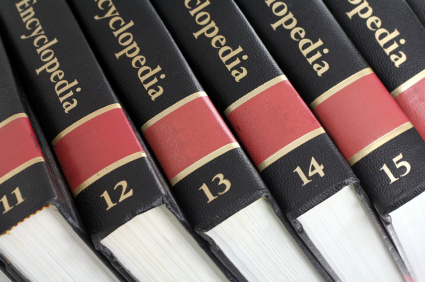
Above: The Wikipedia Logo (Source: Google.com)
The Brawl
The battle of references is often being judged by their relevance and credibility. It’s an obvious fact that encyclopedia is way much older, and is communicated in a form of series that is written inside thick books. Houses to almost 4000 expert contributors and its target audience are educated adults. Britannica encyclopedia is the reference book to look at if one does not know a particular fact or one wants to know more knowledgeable fact. (Sanders 2006) Contents in an encyclopedia is always updated and re-edited to show creditability. In document publication terms, Britannica encyclopedia arranges their facts, listing things which are important, and filtering the less important ones. This means proofreading, is not applicable, as everything is important. Wikipedia is a new online database, which houses thousands of facts and hitched popularity after the millennium. Setting things aside, Wikipedia could have win the user friendly battle by adding more hyperlinks and navigational menu to assist readers with the content of the website. (Walsh 2006)

Above: The series of Britannica Encyclopedia (Source: Google.com)
The Criticisms
Wikipedia is an online source, and they designed their pages of content without any clustering of advertisements. The document designer really carefully planned the documentation page as they have proper table of content to show simplicity. However, the downfall of wikipedia which had contributed too many criticisms is, facts in the contents of the online encyclopedia can be contributed by anybody. (Noort 2005) One of them are, Britannica encyclopedia itself lashes out to wikipedia from a recent study by Nature: A research study publishing magazine. The study and research have accoutered more than 162 inaccuracies in Wikipedia. (Sanders 2006)
The Footnote of it all
Many would say they would prefer Britannica encyclopedia as their primary choice for reference. This is because due to their decades and years of reviewed articles and facts. Contrarily, on a personal note, Wikipedia do give a negative image by letting anybody giving their inputs towards any materials and facts of the world. Online encyclopedia should not follow the conventional way but throwing thick paragraph of text, they should put in keywords as users n the computer scan for keywords as they read lesser on screen. (Kress & Leeuwen 2006) However, if you think of it this way, why must facts and knowledge be contributed by educated elites of academia? It would definitely hold more truth and insight if we get contribution from other societies which aren’t book smart or literate.
References List
Kress, G. & van Leeuwen, T. 2006, Reading Images, “Chapter 6: The meaning of composition”, Routledge, New York, pp. 175-214.
Walsh, M. 2006, Australian Journal of language and literacy, “The ‘textual shift’: examining the reading process with print, visual and multimodal texts”, Vol.29, No.1, pp.24-37.
Noort V, E (2005) ‘Can you trust Wikipedia?’ Viewed on 7th May 2008, at http://www.mg.co.za/articlePage.aspx?articleid=255920&area=/insight/insight__national
Sanders , T (2006) ‘ Britannica lashes out at Wikipedia Comparison Study’ Viewed on 7th May 2008 at http://www.vnunet.com/vnunet/news/2152666/britannica-snaps-wikipedia








